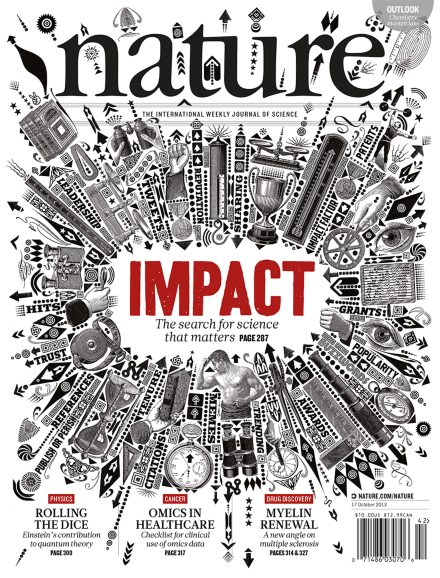Volume 502 Issue 7471, 17 October 2013
Editorial
World View
Research Highlights
Seven Days
News
Correction
News Feature
Comment
Books & Arts
Correspondence
Obituary
News & Views Forum
-
Comparisons across cancers
Collection:

